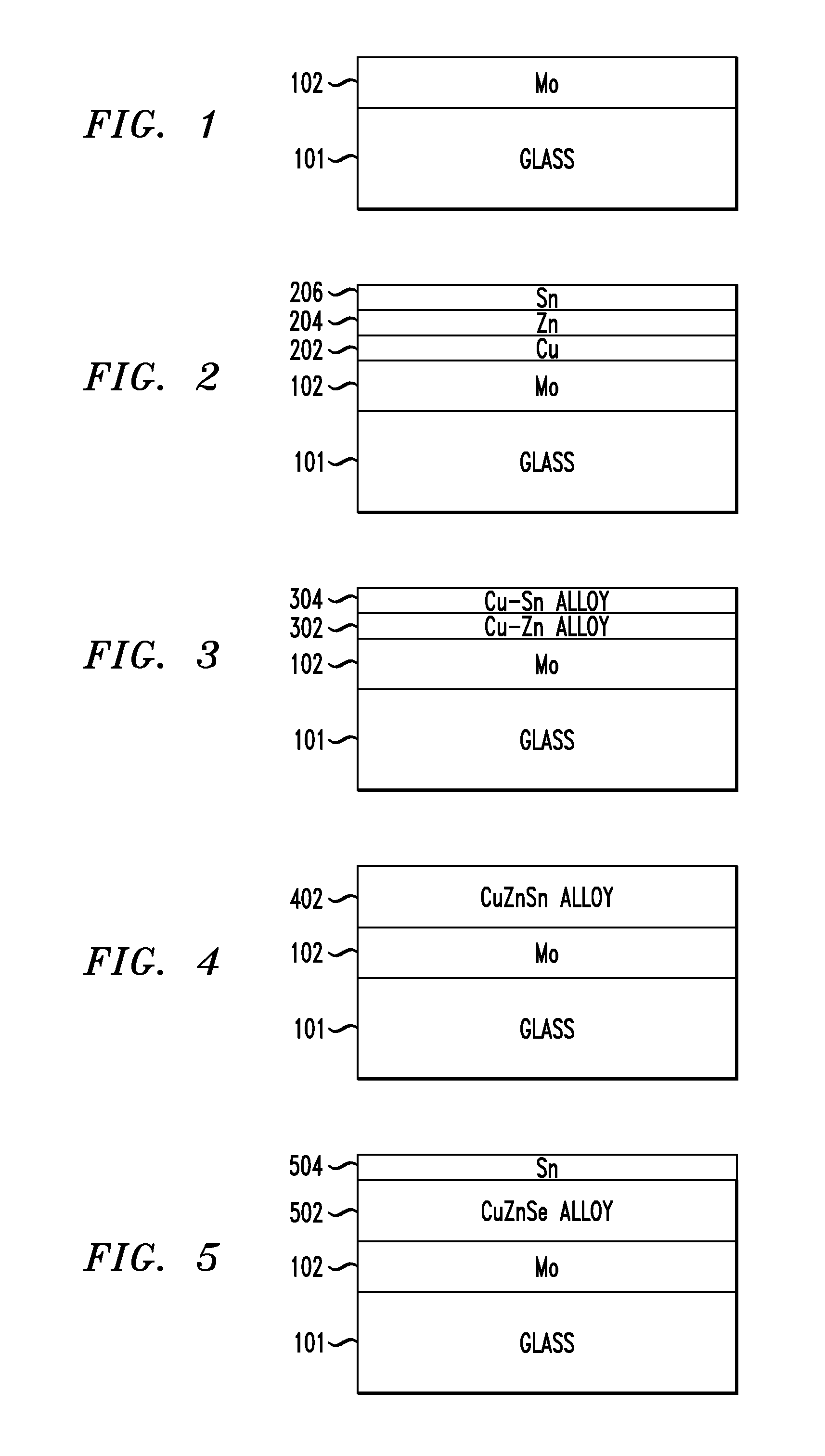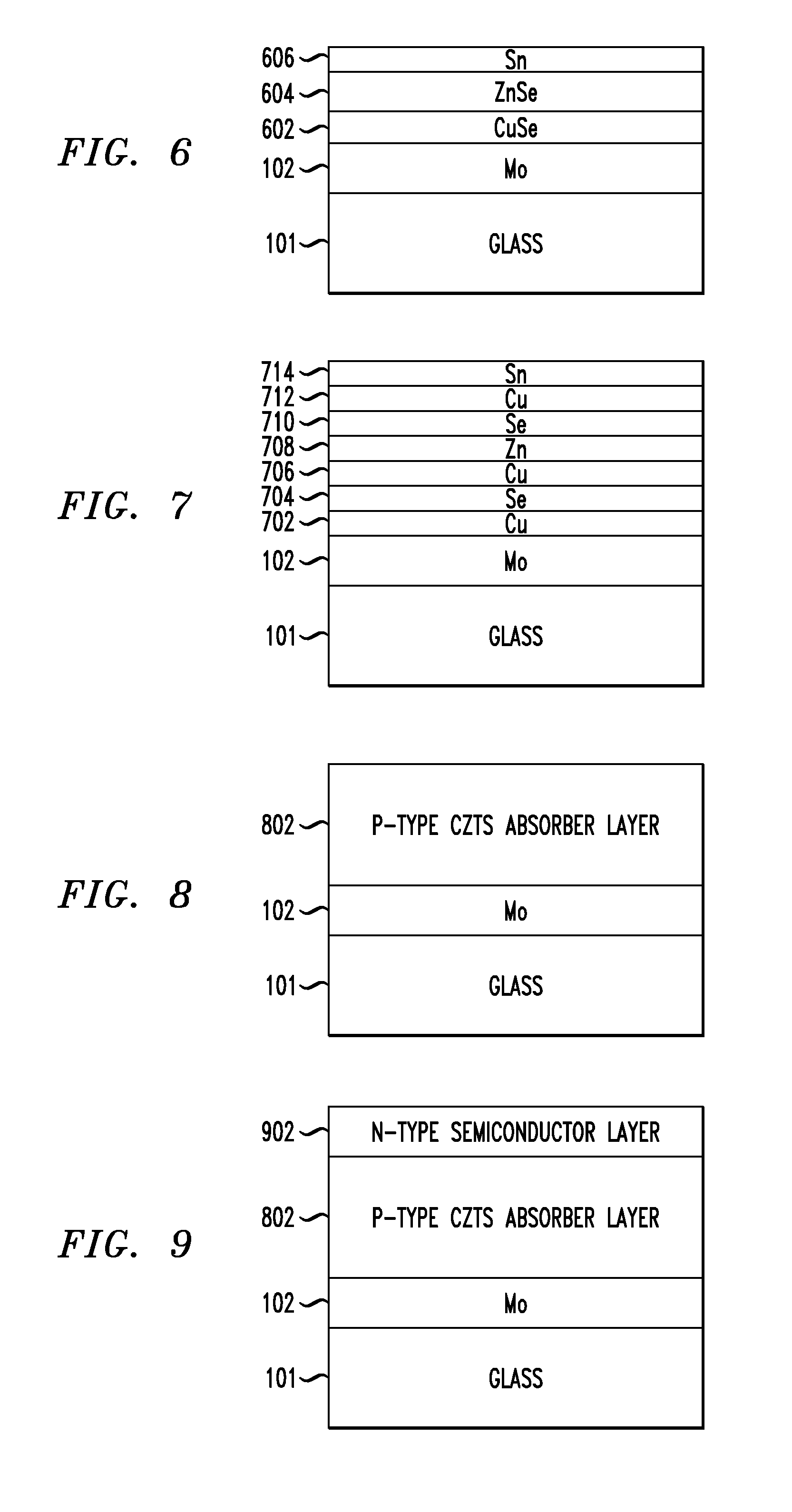Structure and Method of Fabricating a CZTS Photovoltaic Device by Electrodeposition
a photovoltaic device and electrodeposition technology, applied in the direction of solid-state devices, semiconductor devices, basic electric elements, etc., can solve the problems of difficult to uniformly deposit material over large areas, costly vacuum deposition,
- Summary
- Abstract
- Description
- Claims
- Application Information
AI Technical Summary
Benefits of technology
Problems solved by technology
Method used
Image
Examples
Embodiment Construction
[0032]Provided herein is an electrodeposition process for the fabrication of Cu2ZnSn(S,Se)4 (CZTS) p-type absorber materials for solar cell applications. Electrodeposition is much cheaper than any vacuum process and allows the fabrication of large areas with excellent thickness uniformity and compositional uniformity.
[0033]FIGS. 1-10 are cross-sectional diagrams illustrating an exemplary methodology for fabricating a diode, e.g., a solar cell. To begin the fabrication process, a substrate 101 is provided. Suitable substrates include, but are not limited to, glass, metal, metal foil, stainless steel and copper (Cu) foil substrates. A backside electrode 102 is then formed on the substrate. Suitable materials for forming the backside electrode include, but are not limited to, molybdenum (Mo), Cu and titanium (Ti). The backside electrode material may be deposited on the substrate using a physical vapor deposition (PVD) method. A metal (e.g., Cu) layer (not shown) may be present on the b...
PUM
| Property | Measurement | Unit |
|---|---|---|
| temperature | aaaaa | aaaaa |
| temperature | aaaaa | aaaaa |
| temperature | aaaaa | aaaaa |
Abstract
Description
Claims
Application Information
 Login to View More
Login to View More - R&D
- Intellectual Property
- Life Sciences
- Materials
- Tech Scout
- Unparalleled Data Quality
- Higher Quality Content
- 60% Fewer Hallucinations
Browse by: Latest US Patents, China's latest patents, Technical Efficacy Thesaurus, Application Domain, Technology Topic, Popular Technical Reports.
© 2025 PatSnap. All rights reserved.Legal|Privacy policy|Modern Slavery Act Transparency Statement|Sitemap|About US| Contact US: help@patsnap.com



